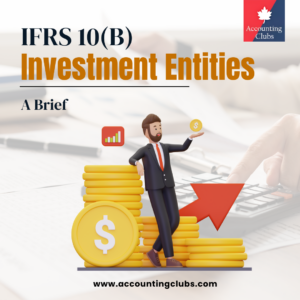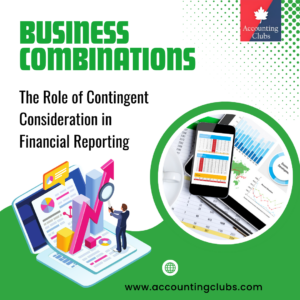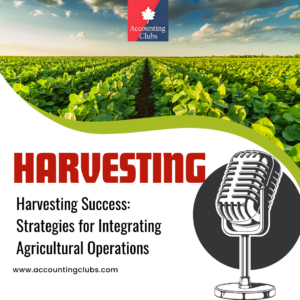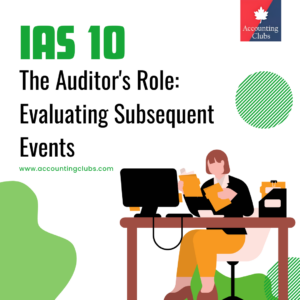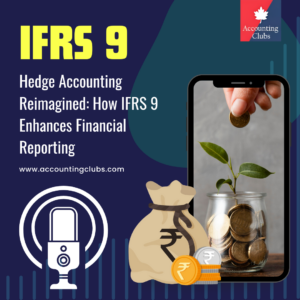Cracking the Code: Understanding Your Company’s Financial Health through IFRS 18

Imagine yourself peering into a treasure chest overflowing with gold coins, jewels, and… wait, what’s that crumpled piece of paper in the corner? That, my friend, is like a company’s financial statements – a treasure trove of information waiting to be deciphered. But unlike gold and jewels, financial statements can be a complex code, shrouded in technical jargon. Thankfully, IFRS 18, the International Financial Reporting Standard, acts as a Rosetta Stone, helping us unlock the secrets within.

This article dives deep into some key aspects of IFRS 18, focusing on three crucial statements: the statement of comprehensive income, the statement of financial position, and the statement of changes in equity. By understanding how these statements are structured and what information they reveal, you’ll gain valuable insights into a company’s financial health, performance, and future prospects.
Statement of Comprehensive Income: Unveiling the Full Picture
Think of the statement of comprehensive income as a company’s financial report card, but a more detailed one than just a letter grade. It presents not just the bottom line (profit or loss), but also other comprehensive income (OCI). OCI includes items like foreign currency revaluation gains or losses, or changes in the fair value of available-for-sale investments. These items impact the company’s overall financial well-being but don’t directly affect cash flow.
Decomposing Other Comprehensive Income: A Deeper Dive
IFRS 18 emphasizes clear categorization within the statement of comprehensive income. OCI is divided into two groups, providing a more granular understanding of a company’s financial performance:

- Income and Expenses to be Reclassified: This category includes items like gains/losses on sale of certain investments. These eventually flow through to the profit or loss statement, but their timing might be uncertain. For instance, a company might hold a valuable piece of land on its books. While the land itself is an asset (reflected in the statement of financial position), its fair value might fluctuate due to market changes. IFRS 18 requires these fluctuations to be reported as OCI until the land is eventually sold, at which point the gain or loss becomes part of the profit or loss.
- Income and Expenses Not Reclassified: This category includes items that won’t directly impact profit or loss, such as revaluation of property, plant, and equipment. Understanding this distinction helps separate a company’s core earnings from temporary fluctuations in asset valuations.
Statement of Financial Position: A Snapshot of Assets and Liabilities
Now, let’s shift gears and imagine the statement of financial position as a company’s balance sheet. It provides a snapshot of everything the company owns (assets) and owes (liabilities) at a specific point in time. Here, IFRS 18 emphasizes the concept of “liquidity” – the ease with which an asset can be converted into cash. Ideally, current assets (like cash or inventory) are readily convertible, while non-current assets (like buildings) are not. Similarly, current liabilities (like accounts payable) are due within a year, while non-current liabilities (like long-term loans) have a longer repayment horizon. Understanding this distinction helps assess the company’s short-term financial flexibility.
Current vs. Non-Current Classification: A Balancing Act

IFRS 18 allows some flexibility in classifying assets and liabilities as current or non-current. In general, the classification should be based on liquidity. However, there are situations where a presentation based on liquidity might not provide the clearest picture. For instance, a company might have a long-term loan with a scheduled repayment due within the next year, but also have a highly liquid investment portfolio that could easily cover the loan repayment. In such cases, IFRS 18 allows the company to present the loan as non-current, reflecting the overall ability to meet its near-term obligations. This flexibility ensures a nuanced understanding of the company’s financial position.
Statement of Changes in Equity: Tracking the Company’s Net Worth
The statement of changes in equity tracks how a company’s net worth (equity) fluctuates over time. It considers factors like profit or loss, other comprehensive income, and transactions with owners (such as issuing new shares or paying dividends). Analyzing these changes reveals how the company’s internal resources are being utilized and distributed.
A Closer Look at Equity Components
Equity is not a monolithic entity. IFRS 18 requires companies to disclose changes in each component of equity, such as:
- Each class of contributed equity (e.g., common stock, preferred stock)
- The accumulated balance of each class of other comprehensive income
- Retained earnings
By analyzing changes in these individual components, stakeholders can gain a deeper understanding of a company’s capital structure and financing decisions. For instance, if a company issues a significant amount of new common stock, it might be a sign that they are looking to raise capital for expansion or acquisitions. Conversely, a large increase in retained earnings could indicate a focus on internal growth and reinvestment of profits.
Beyond the Basics: Transparency is Key
IFRS 18 goes beyond just structure. It emphasizes clear labeling and explanations. Every number presented should be accompanied by a clear explanation of what it represents and how it was calculated. This transparency allows users to truly understand the story behind the numbers. For example, a company might disclose the specific valuation methods used for its inventory (e.g., FIFO, LIFO, weighted average cost), allowing users to assess the potential impact on future financial performance. Different valuation methods can yield different values for the same inventory, and understanding the chosen method is crucial for making informed comparisons between companies.
Additional Disclosures: Unveiling the Nuances

IFRS 18 requires companies to disclose additional information alongside the core financial statements. These disclosures provide further context and insights into a company’s financial health and prospects. Some key disclosure areas include:
- Accounting policies: This section explains the specific accounting principles the company follows in preparing its financial statements. Understanding these policies allows users to interpret the financial information more effectively. For instance, a company might disclose its policy for depreciation of property, plant, and equipment. This information helps users assess the impact of depreciation charges on the company’s reported earnings and future cash flows.
- Critical accounting estimates: Certain accounting principles require companies to make estimates based on judgment and assumptions. IFRS 18 requires disclosure of these critical estimates and the potential impact of changes in those estimates on the financial statements. For example, a company might disclose its estimate of the useful life of its machinery and equipment. Changes in this estimate could significantly affect reported depreciation expense and future profits.
- Segment reporting: This section provides financial information about different segments of the company’s business. This allows users to assess the performance and risk profile of each business segment and understand how they contribute to the overall company performance. For instance, a conglomerate might disclose financial results for its manufacturing and retail divisions separately. This allows investors to identify which segments are driving growth and profitability.
By providing a comprehensive framework for financial reporting, IFRS 18 empowers stakeholders to make informed decisions. Investors can assess a company’s true financial health, growth potential, and risk profile. Lenders can gauge a company’s ability to repay debts. And regulators can ensure a fair and transparent financial reporting environment. Ultimately, clear financial communication is the cornerstone of a healthy and secure financial system for everyone involved.
The Road to Financial Literacy: Empowering Stakeholders
Financial statements, once decoded, become a powerful tool for understanding a company’s financial health and future prospects. By equipping yourself with the knowledge of IFRS 18, you gain the ability to ask insightful questions, make informed investment decisions, and hold companies accountable for their financial performance. Remember, financial literacy is a journey, not a destination. The more you delve into the world of financial statements, the better equipped you’ll be to navigate the complexities of the financial markets and make sound financial decisions for yourself and your future.
Tag:accounting, environment, esg, governance, ias, ifrs, solutions, sustainability


